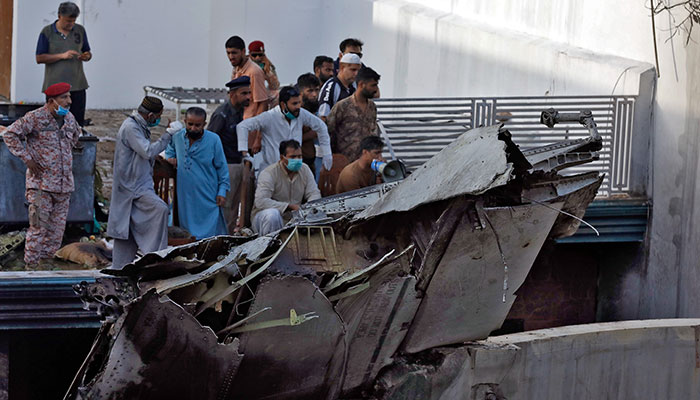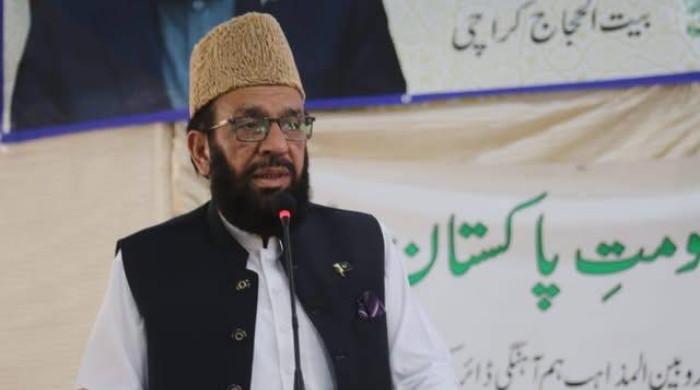'No space for ambulances': Plane crash rescue effort hampered by poor planning of housing society
The fire brigade was late to arrive and ambulances had trouble navigating narrow streets as PIA plane crash operation got underway, rescuers say
May 24, 2020

Rescuers who were on site after PIA flight PK-8303 crashed in Karachi's Malir Colony believe that the damage caused by the disaster could have been mitigated if only the streets of Jinnah Garden, the neighborhood where the plane crashed, not been so narrow and if the fire brigade could have arrived a little earlier.
Ali Raza, one of the volunteers from the JDC Foundation who was among the first to reach the crash site, recalled that the narrow streets posed a major challenge during rescue operations.
“The streets were so narrow that there wasn’t any space for even an ambulance to turn,” he told The News.
He also recalled that there were clouds of thick black smoke everywhere.
“The crash was inside a densely populated residential street and it was nearly impossible for us to identify the exact spot,” he said. “The smell of fuel and gas everywhere and they had to wait for the utility providers to discontinue their services before entering.”
When they entered the street where the plane crashed, rubble and debris were everywhere.
A few bodies from the aircraft had fallen on the roofs of the houses when the plane collided with the residential buildings. They were transported to hospitals by the area residents.
The heat from the inferno was such that the rescuers felt it even after the fire itself was extinguished.
“The water used to extinguish the fire pooled at the crash site, and it was so hot we could feel its heat through our thick rubber gloves,” Raza said.
The last two bodies to be recovered were of two children.
“I am not sure who those children were, as they were unrecognisable, but their height clearly showed that they were kids.”
In a low voice, Raza said retrieving those bodies was the saddest part of the entire rescue operation.
The rescuers used a room in one of the houses to put the suitcases and luggage of the passengers. “Whatever belongings of the passengers we were collecting were being placed in that room.”
A driver of the Edhi ambulance service, Muhammad Shafiq, was among the first responders.
Talking to The News, he said that the three Edhi ambulances which initially reached the area could see nothing but smoke.
Another driver, Shahid Baloch, said dozens of cars had been burnt.
He regretted that it took quite some time for the fire brigade to reach the street, saying that the damage could have been much less if it had reached earlier.
“By the time the firefighters reached, more than half a dozen vehicles were already burnt,” he recalled.
As soon as the firefighters accomplished their task, the rescue workers moved in.
According to Baloch, the street was so congested that they had to destroy the boundary wall and the grill of a house to continue their rescue operation freely.
“There were a few residents stuck inside the houses,” he recalled. “They had locked themselves inside rooms to save themselves from suffocation due to the smoke.”
Meanwhile, an official of the Karachi Metropolitan Corporation (KMC) told The News on the condition of anonymity that the fire engines stationed in Malir had been out of order and it took time for the fire tenders to arrive from Sohrab Goth and Gulshan-e-Iqbal.
Originally published in The News











